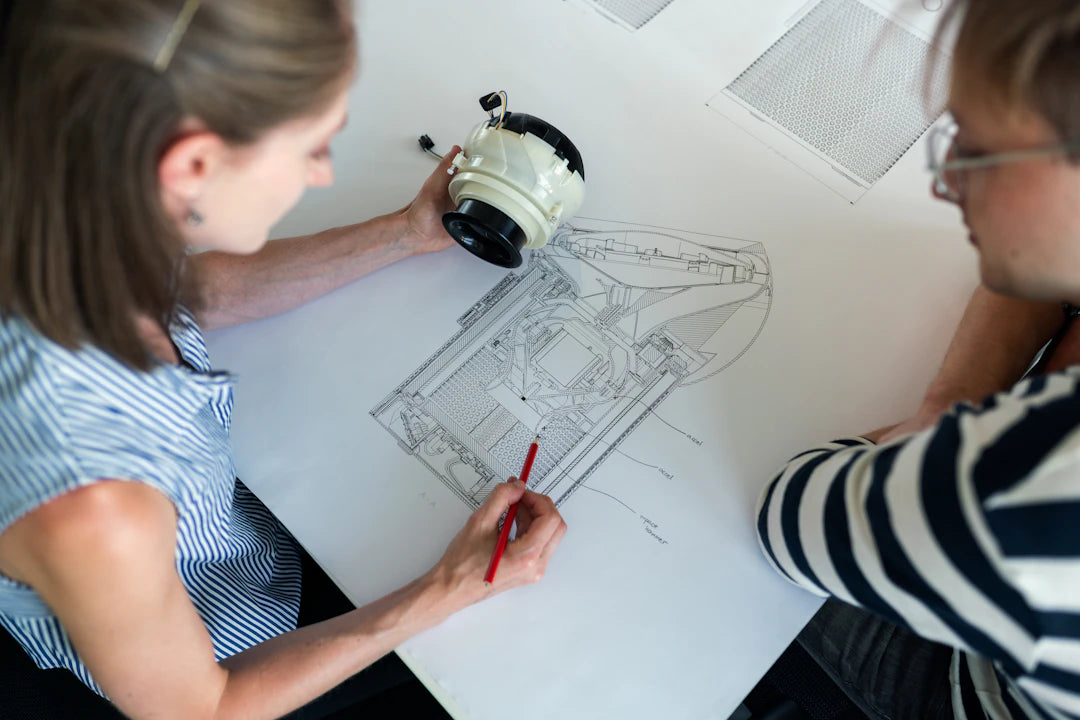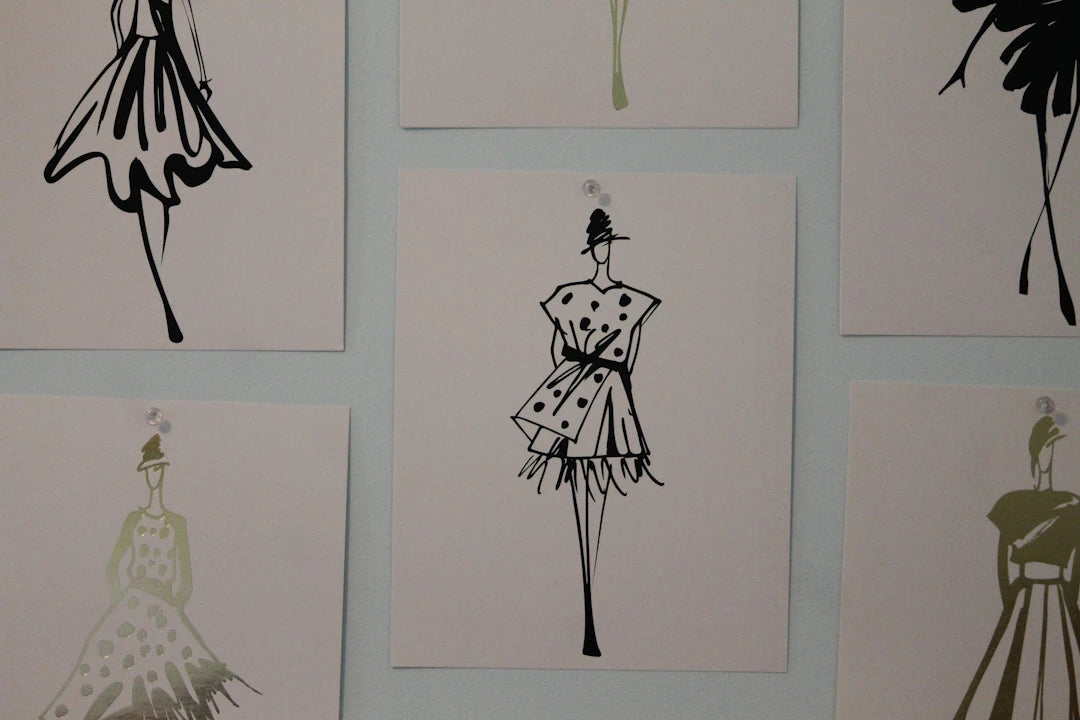Overview
This blog provides a comprehensive guide to fabric rendering in digital fashion illustration using Procreate. It covers the importance of fabric rendering, different fabric types, essential Procreate brushes, techniques for achieving textile realism, and practical tips for improving efficiency and quality. Additionally, it discusses the future of fashion illustration, how to create engaging sketches, building a strong portfolio, and finding inspiration for projects. Emphasizing continuous learning and creativity, it encourages readers to enhance their skills in fabric rendering.
Frequently Asked Questions
1. What is the importance of fabric rendering in fashion illustration?
2. What are the main types of fashion fabrics?
3. What are some essential Procreate brushes for fabric rendering?
4. What techniques can I use to achieve textile realism in my illustrations?
5. How can I improve my efficiency and quality while rendering fabric in Procreate?
Welcome to the world of digital fashion illustration! If you're eager to enhance your skills and bring your fashion sketches to life, you’re in the right place. In this comprehensive guide, we will dive deep into the art of fabric rendering using Procreate brushes, providing you with essential Procreate tips for designers, inspiration, and practical advice to elevate your digital fashion illustrations.
The Importance of Fabric Rendering in Fashion Illustration
Fabric rendering is a crucial skill for any fashion illustrator. Successfully portraying different textiles can transform your sketches from mere ideas into vibrant, lifelike pieces of art. Understanding how various materials behave, their textures, and how they reflect light will enhance your overall designs.
Let’s explore some foundational concepts to get your fabric rendering techniques up to par.
Understanding Different Fabric Types
Fashion fabrics can be broadly categorized into three main types: woven, knitted, and non-woven. Each type has unique characteristics that affect how they look and behave when rendered. Here's a quick overview:
- Woven Fabrics: These are typically sturdy and can come with distinct patterns. Examples include denim, silk, and cotton.
- Knitted Fabrics: These have a stretchy quality and are often used in garments like sweaters and t-shirts. Examples include jersey and rib knit.
- Non-Woven Fabrics: These fabrics are created through methods like bonding or felting. They can be less typical in fashion but great for innovative designs.
Understanding these fabric types will significantly help in accurately rendering texture, shadow, and light reflection in Procreate.
Essential Procreate Brushes for Fabric Rendering
Choosing the right brushes can make all the difference in your fabric rendering journey. Here are some recommended brush types to get you started:
- Texture Brushes: These brushes replicate the texture of different fabrics. Look for brushes that mimic the grain of linen or the smoothness of silk.
- Watercolor Brushes: Ideal for creating soft gradients and realistic shadows that are essential in depicting the folds of fabric.
- Custom Fabric Brushes: Consider investing time in creating custom brushes or downloading specialized brushes designed for fabric simulation.
Creating and Customizing Brushes
Don’t hesitate to customize existing brushes or even create your own to suit your design needs better! Here’s a step-by-step on how to create a custom brush in Procreate:
- Open Procreate and go to your Brush Library.
- Tap the “+” icon to create a new brush.
- Adjust the shape, grain, and rendering settings. Experiment to find the right combination that fits the fabric you're trying to portray.
- Save your brush and test it on a fabric swatch to see how it performs.
Techniques for Capturing Textile Realism
Once you have your brushes set up, it's time to apply techniques that'll bring your fabric sketches to life. Here are some effective methods:
Grayscale Rendering
Start with a grayscale rendering of your fabric to establish the light and shadow dynamics. This technique allows you to focus on the values and helps in understanding how light interacts with textures before applying color.
Layering Techniques
Utilize multiple layers in Procreate. Start with a base layer of color, then build texture and shadow on separate layers. Here’s how to do it:
- Use one layer to paint the base color of the fabric.
- Add a new layer above for shadows; use a soft brush with a lower opacity for a more natural feel.
- Finally, add highlights to create depth using a finer brush with lighter colors.
Practical Tips for Efficiency and Quality
Rendering fabric might be a creative endeavor, but it doesn't have to slow you down. Here are some Procreate tips for designers to improve sketch quality and productivity:
- Use Reference Images: Always work with high-quality references for different materials. This practice will help you capture the nuances that define each fabric type.
- Set Up Quick Access Brushes: Organize your most-used brushes in a separate folder in your Brush Library for easier access while you work.
- Group Similar Layers: Layer management can speed up your workflow. Group layers by fabric sections or color to streamline the rendering process.
The Future of Fashion Illustration
The rising trend in digital fashion illustration is more than just a fad. As more designers and artists venture into the digital realm, mastering tools like Procreate becomes essential. Whether you're taking a digital fashion illustration course or refining your skills independently, the digital canvas offers endless possibilities.
Creating Engaging Fashion Sketches
Consider creating sketches that tell a story about your collection or design concept. This can elevate your work, making it not only visually appealing but also conceptually engaging. Try to incorporate elements like:
- Environmental context (e.g., urban, nature).
- Character poses that showcase the movement of the fabric.
- Accessories that reflect the fabric's mood.
Building a Strong Portfolio
As you develop your fabric rendering skills in Procreate, remember that your portfolio is a reflection of your artistic journey. Here are some tips for a standout portfolio:
- Diversity: Include a variety of fabric types and illustrations to showcase your versatility.
- Process Work: Share sketch iterations and your rendering process to give viewers insight into your artistic method.
- High-Quality Presentations: Present your work in high resolution. A professional finish can make a significant impact on potential clients or instructors.
Inspiration for Your Next Projects
Sometimes, all you need is a little inspiration to kickstart your creativity. Seek out fashion magazines, social media platforms, and online forums to gather ideas. Consider the following:
- Trend forecasting websites to stay updated with current styles.
- Fashion history books that can spark unique fabric ideas and patterns.
- Following other digital illustrators for fresh perspectives and techniques.
Your Journey Awaits
The art of fabric rendering in Procreate is a dynamic and evolving skill that can elevate your fashion illustration game. By understanding different types of fabrics, utilizing effective brushes, and practicing various techniques, you can create stunning artworks that reflect your unique style. Remember that learning is a continual journey—embrace the process, seek feedback, and most importantly, keep pushing the boundaries of your creativity. Happy illustrating!
Linked Product

Fashion Procreate Masterclass
The "Fashion Procreate Masterclass" offers a comprehensive 4-hour video course designed to enhance your fashion illustration skills using Procreate. Along with the masterclass, you will receive an exclusive Pro Kit, providing additional resources to support your creative process. This course is suitable for artists looking to refine their techniques and produce professional-quality fashion sketches.
View Product




Leave a comment
This site is protected by hCaptcha and the hCaptcha Privacy Policy and Terms of Service apply.